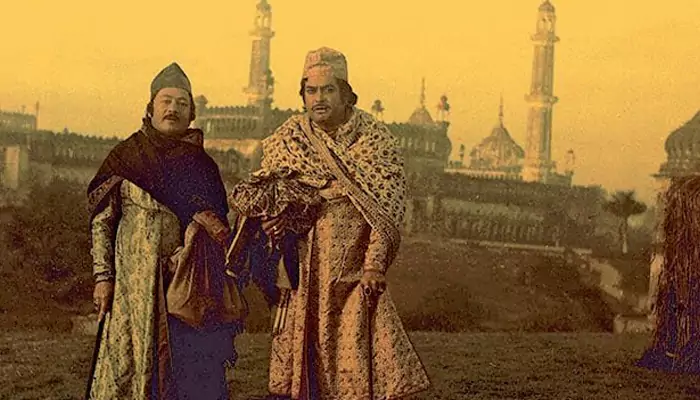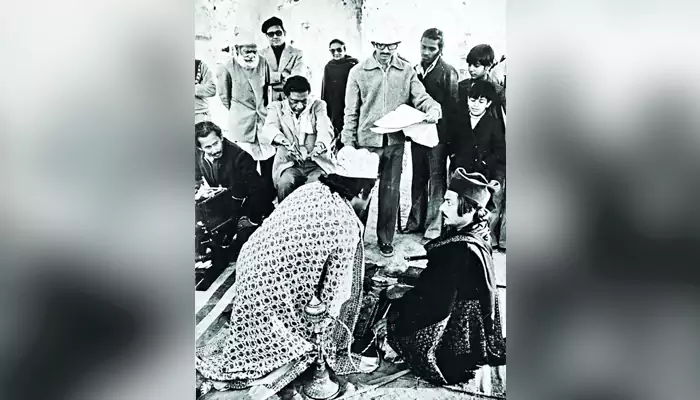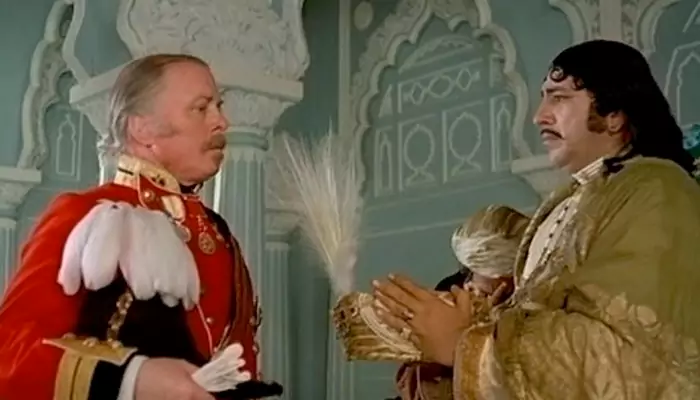
The 1977 film directed by Ray is based on Munshi Premchand's short story of the same name.
Leela Majumdar, Satyajit Ray's beloved paternal aunt and a celebrated writer herself in Bengali literature, once said: "Manik (Ray's nickname) could have been a crorepati if he had wanted. But he had other plans." And she was right. Ray was committed to his roots and culture, even when the world beckoned him with lucrative offers from every corner of the film industry, including Bollywood. Despite having the potential to rake in riches, he chose to make Bengali films throughout his career, often on tight budgets and basic setups. Because his focus was never on money but on art, culture, and storytelling that resonated with his identity. In fact, his main source of income wasn’t even his films but his writing—his books were (still are) bestsellers. In an international context, Ray made just one film, titled 'Two', a short with no dialogue. And while the allure was quite strong, he made only one film for the Hindi film industry. That film, however, became a monumental milestone in his career, showcasing his distinct style and mastery of the craft.
Satyajit Ray shooting SHATRANJ KE KHILARI, 1977. pic.twitter.com/3Gi6VAg09a
— MUBI India (@mubiindia) November 1, 2019
(Credit: MUBI India)
To mark the late maestro's 33rd death anniversary, let's revisit 'Shatranj Ke Khilari' - the only Hindi film directed by him.
Adapted from Munshi Premchand’s 1924 short story, 'Shatranj Ke Khilari' is set in 1856, on the eve of the Indian Rebellion of 1857 and just before the British annexation of the Indian princely state of Awadh. The film runs two parallel storylines—one political, the other personal. On one side, there’s the calculated diplomacy of the British East India Company, led by General James Outram. On the other, we have two noblemen—Mirza Sajjad Ali and Mir Roshan Ali—so obsessed with chess that they’re blind to the political storm brewing around them.
Shatranj Ke Khilari (1977)
— International Film Festival of India (@IFFIGoa) November 17, 2022
Director: Satyajit Ray pic.twitter.com/3BBrHb5X4K
(Credit: International Film Festival of India)
Ray uses chess as a brilliant metaphor: just as the pieces are moved on the board, so are people and kingdoms in real life. It’s a commentary on the inertia of India’s elite, whose apathy arguably made colonization easier.
The film brings together a powerhouse ensemble, such as:
Sanjeev Kumar as Mirza Sajjad Ali
Saeed Jaffrey as Mir Roshan Ali
Amjad Khan as Nawab Wajid Ali Shah
Richard Attenborough as General James Outram
Shabana Azmi as Khurshid (Mirza’s wife)
Farida Jalal as Nafisa (Mir’s wife)
Victor Banerjee as the Prime Minister
Tom Alter as Captain Weston
Leela Mishra as Hirya (Khurshid’s maid)
Amitabh Bachchan as the narrator (voice-over)

Besides directing, Ray also wrote the screenplay, composed the music, and designed the sets and costumes. Cinematographer Soumendu Roy and editor Dulal Dutta, both frequent Ray collaborators, brought his vision to life. Producer Suresh Jindal played a crucial role in bringing together Indian and international talent.
An interesting anecdote: Ray wasn’t fluent in Hindi, so he roped in Shama Zaidi and Javed Siddiqui for the dialogues. And despite being a legendary filmmaker, he was nervous about directing seasoned Hindi actors like Sanjeev Kumar and Amjad Khan!
Amjad Khan and Satyajit Ray from the sets of Shatranj Ke Khilari (1977) pic.twitter.com/munstRyZP1
— CinemaRare (@CinemaRareIN) August 2, 2018
(Credit: CinemaRare)
Ray was initially hesitant to make a Hindi film. His concern? Writing authentic dialogues in a language that wasn’t his mother tongue. But he overcame that by collaborating with experienced writers. The bigger hurdle was the sheer scale of the project. For historical authenticity, he and art director Bansi Chandragupta poured over British archives, visited museums, and scouted historical locations across Lucknow, Jaipur, and Calcutta.

The film was made on a modest budget of Rs 20 lakh (roughly about Rs 6 crore as of today), and Ray reportedly faced resistance from certain quarters in the industry who didn’t want an "art film" to outshine mainstream cinema.
Without an iota of doubt, 'Shatranj Ke Khilari' is just another example of Ray's brilliance. While others may have chosen melodrama in portraying a period story, Ray leans into nuance and subtlety. His Nawab Wajid Ali Shah, played by Amjad Khan, is a poetic soul caught in the tide of politics. The chess-obsessed friends are both tragic and hilarious, making us chuckle even as we sigh at their ignorance.
Remembering #SatyajitRay: The Legend Of Indian Cinema, on his 31st death anniversary (23/04/92).
— Bollywoodirect (@Bollywoodirect) April 23, 2023
One of the greatest filmmakers of all time, Satyajit Ray, has given a completely new definition to the 20th-century cinema.
Satyajit Ray shooting 'Shatranj Ke Khilari' in front of… pic.twitter.com/mbKNypZVSl
(Credit: Bollywoodirect)
And his craft shines in literally every frame—from meticulously recreated Mughal-era sets to the haunting background score (composed by Ray himself). He lets the camera linger, allowing characters and their dilemmas to breathe.
The film wasn’t a box-office juggernaut, but it became a critical success. It won the 1978 National Award for Best Feature Film in Hindi and the Best Cinematography (Color) for Soumendu Roy. At the Filmfare Awards, it won Best Film (Critics), Best Director, and Best Supporting Actor (Saeed Jaffrey). Also, it was nominated for the Golden Bear at the Berlin International Film Festival.

Globally, 'Shatranj Ke Khilari' cemented Ray’s place among cinematic greats. Martin Scorsese has often cited Ray as one of his biggest influences, saying that "this film deals with a moment of incredible change in Indian history and is told from a comical view that is a hallmark of Ray’s work. Watching it, I realize this is what it must really feel like to live through a moment of historic change. It feels this big and tragic at the same time."
This was the only collaboration between Ray and Amitabh Bachchan. Notably, Bachchan started his career in the industry as a narrator in Mrinal Sen's (Ray's contemporary) 'Bhuvan Shome'.
Richard Attenborough, who plays the British General in the film, is the same man who later directed 'Gandhi'.
(Credit: Shemaroo Filmi Gaane)
In 2010, it was restored and preserved by the Academy Film Archive, making sure Ray’s legacy remains intact.